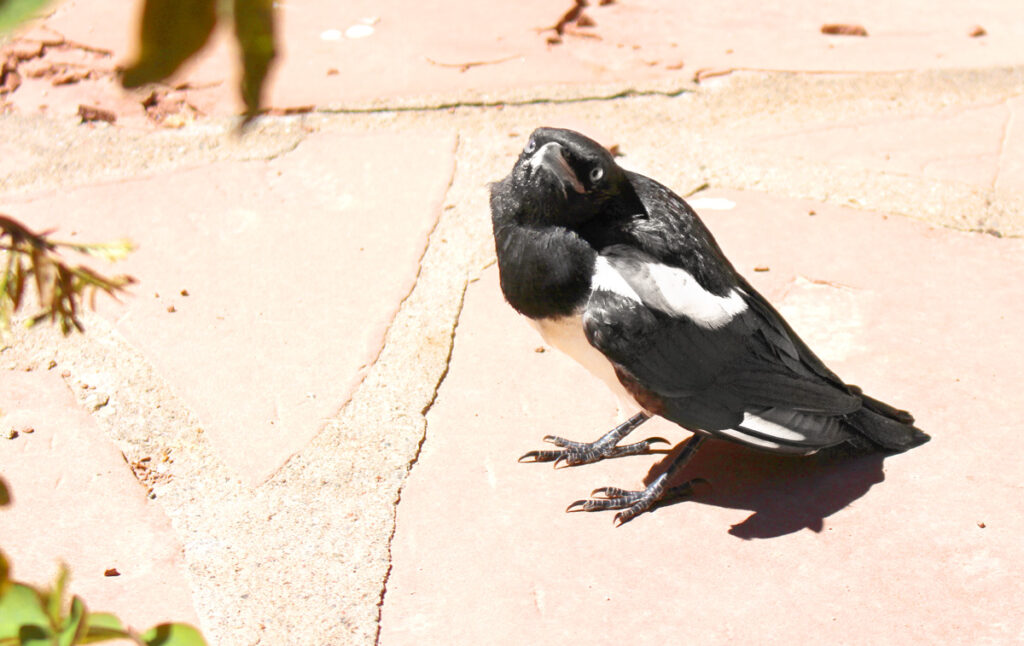In case you didn’t notice, we’re in some hard times right now. This month’s article is about a way I’ve found to cope with increasing stress through combining mindful meditation with birding, and I hope it helps you as well.
For those unfamiliar with it, mindfulness describes the practice of being wholly conscious and aware in the present moment, accepting your thoughts and feelings without judgment, and letting them wash away. Research has proven that regular mindfulness practice helps alleviate feelings of stress and anxiety and create a more balanced, deliberate mind. Mindfulness is just that: a practice, a stepping stone on the path to better mental and physical health. You can practice mindfulness anywhere, any time. The most common mindfulness meditation is to simply focus on your breathing, noticing each inhale and exhale. Your thoughts or worries may intrude and that’s okay; the key is to acknowledge that you’re having the thought, then let it go and return to watching your breath.
With that in mind, mindful birding is the act of bird watching at a much slower and intentional pace. Rather than walking around trying to find birds or check off a list, you’ll simply plop yourself down in a nice open space and let the birds come to you. Notice the songs you hear, the sweet and shrill notes created by such tiny little throats, notice the colors of their feathers, woven to their bodies in such precise patterns, and notice how they move—how they swoop, flutter, hop, and dive about the air with ease.
If you decide to keep notes of what you see, then go for it—there is no “correct” way to go birding. Writing down the details of what you see will keep you in a mindful state and improve your birding ability by noticing both large and subtle differences between bird species.
The four main characteristics birders look for are:
Size and shape
Color pattern
Behavior
Habitat
Most bird sizes can be classified in three categories: sparrow (small), robin (medium), or crow (large). For color patterns, keep in mind what sort of “brush stroke” painted it; is the bird streaked with brown, or patched with yellow, or tipped with red?
With behavior you’ll want to pay attention to how the bird moves. Does it fly around in slow circles or dramatic arcs? Does it hop and peck for food or crawl up tree trunks hunting for insects? Lastly, habitat is where you are—beautiful northern New Mexico during the summer months, so are you in a forest, near a body of water, or out on the arid plains?
Now you just need a bird identification book. I personally use Birds of New Mexico by Stan Tekiela, but any book covering the American Southwest will work just fine. Please remember to support small, local booksellers, including used bookstores and online sites, such as thriftbooks.com. You can also use an app like the Cornell Lab’s Merlin app, which includes bird songs and calls as well.
Consider the following as you let yourself absorb the sights and sounds of wilderness: How do you look to the native fauna? What would a “bird’s eye view” of your surroundings be like? How many generations of birds have led to the one you see before you? What are your senses telling you; what do you see, smell, feel, hear, and taste? Approach this with a beginner’s mind, a child’s mind, and let curiosity compel you. If you have a good friend or two, or a family member, bring them along. You’d be surprised at what simply sitting in silence together for 20 minutes in nature can be.

Author
-

Bryce Flanagan moved from Sacramento, CA to Taos County in 2016, and has lived in Questa for two years. He's passionate about the unique and beautiful wildlife of our state and is a regular contributor to the Questa Del Rio News.
View all posts



